Spain has been battered by yet more storms which triggered flash floods just two weeks on from one of the worst disasters in its history.
Shocking footage shared overnight on social media showed the deluge gushing through the streets of Alcanar, a town some 100 miles up the coast from flood-ravaged Valencia in the province of Tarragona.
Car alarms blared as the vehicles were overrun by the nighttime surge while people sheltered in their homes.
Streets were flooded in southern Malaga province and the tourist trap of Costa del Sol, while 3,000 people near the Guadalhorce River were moved from their homes as a preventive measure.
Schools across the province were closed, along with many stores and public venues.
Train services were also cancelled between Malaga and Madrid and between Barcelona and Valencia, while Valencia’s regional government restricted the use of private vehicles until Thursday in areas hit by the October storm when tsunami-like floods caused severe car pile-ups.
The torrential rain comes just two weeks after flash floods in Valencia and other parts of the country killed more than 220 people, destroyed thousands of homes and triggered mass protests against regional authorities.
Cleanup efforts in parts of the country hardest hit by the October 29 storm are still continuing, prompting major concern over what more rain could bring to streets still covered with mud and debris.
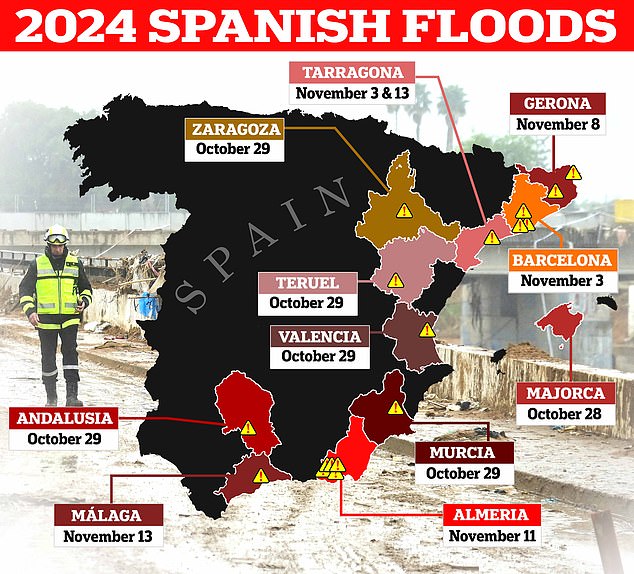
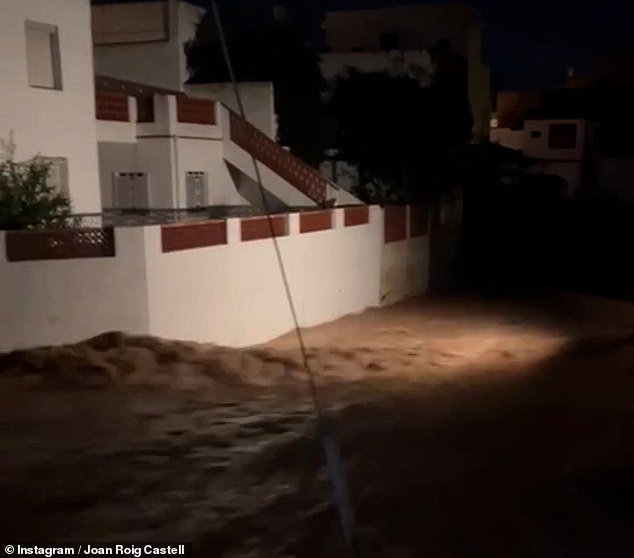

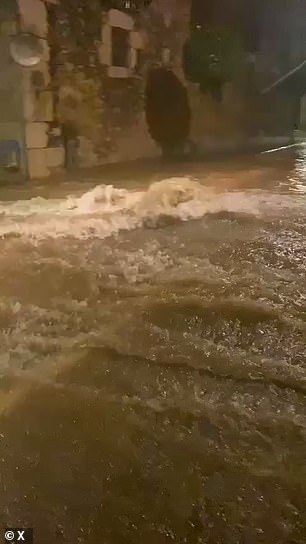
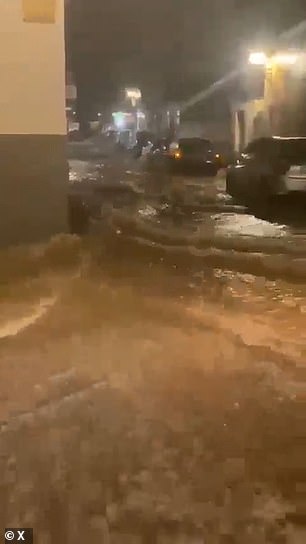
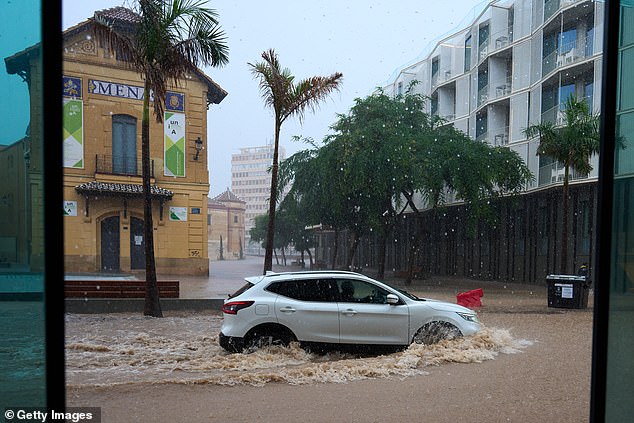
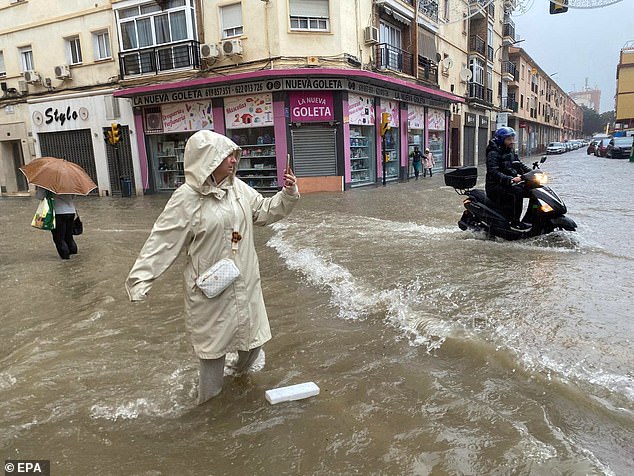
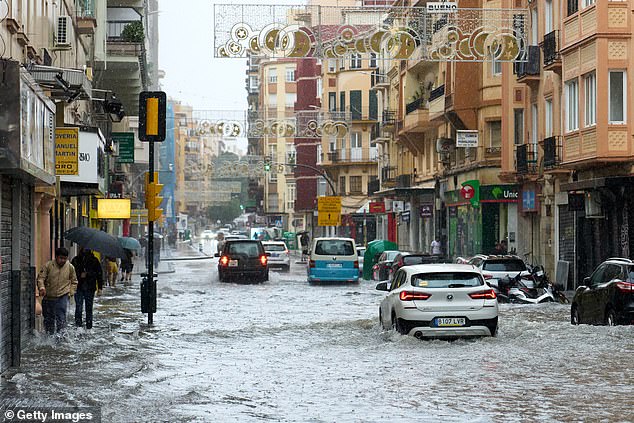
Coastal areas of Valencia were placed under the highest alert on Wednesday night as forecasters warned up to 180 millimetres (7 inches) of rain could fall within five hours.
Spanish weather forecaster AEMET also put Malaga on red alert, saying up to 70 millimetres (roughly 3 inches) of rain had accumulated in an hour late last night.
Parts of Tarragona province in the east faced heavy rain and remained under red alert along with Malaga.
The popular tourist destination of Costa del Sol bore the brunt of the torrential rains and flash floods yesterday, with striking footage capturing waterspouts and tornadoes sweeping across both sea and land.
In Marbella, a tornado was filmed whipping debris along the coastline of the notorious resort town, while floodwaters surged over its iconic seaside promenades as diners watched from waterfront restaurants.
Offshore, towering waterspouts barrelled toward the shore, threatening yachts in a nearby marina.
Meanwhile, in Malaga, residents captured footage of cars forcing their way through deep, flooded streets, with buses stranded in the high water as road barriers were swept away.
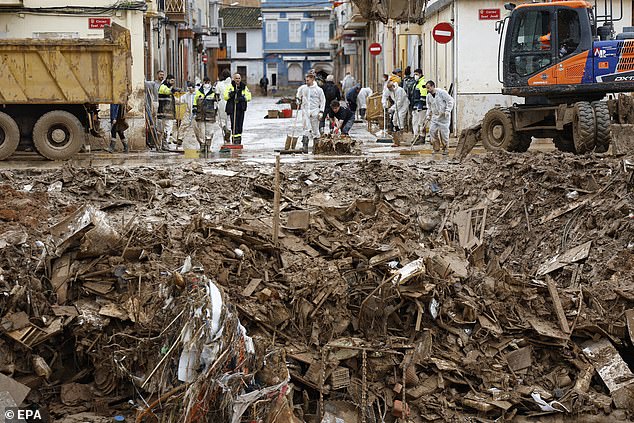
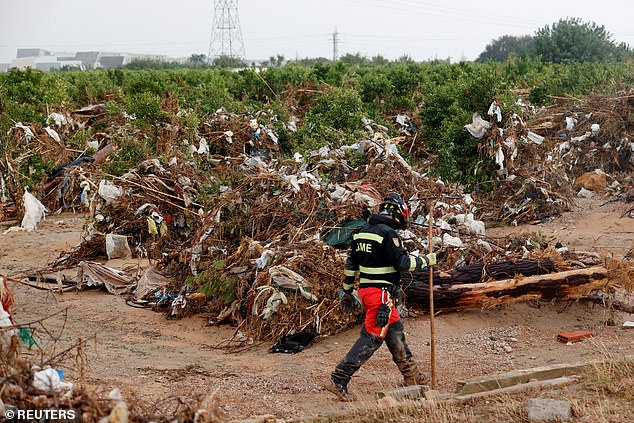
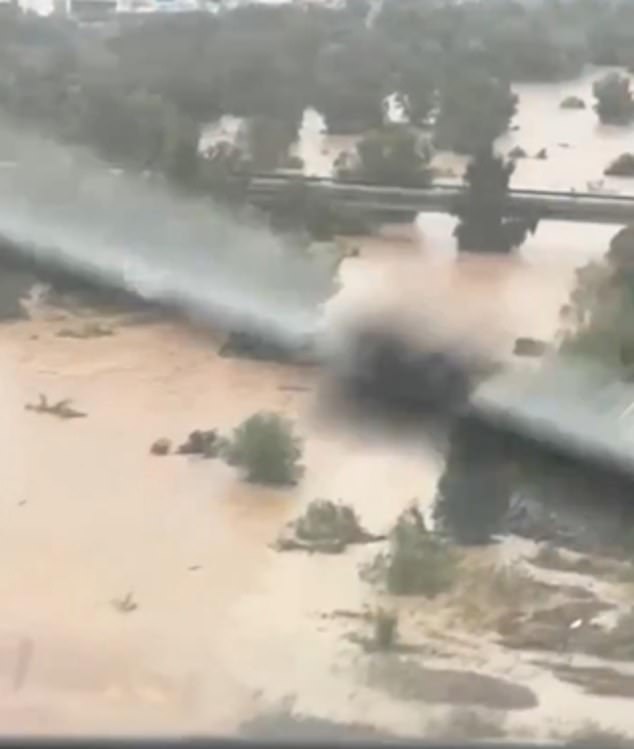
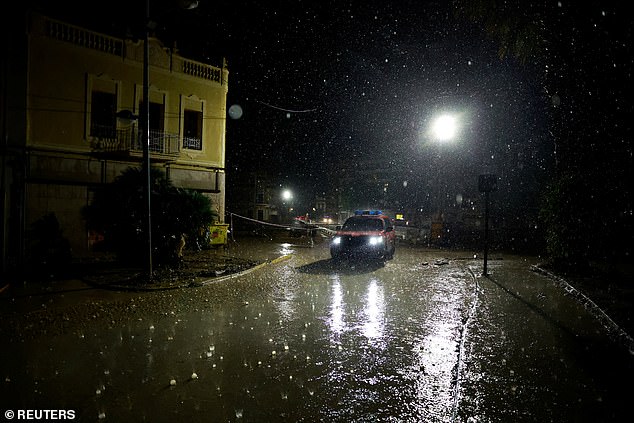
Torrents of water cascaded down staircases within sight of shops and homes, and thousands of people were forced to shelter in place or evacuate to safety amid the hazardous conditions.
Video from Malaga’s El Corte Ingles shopping centre showed rain pouring through the ceiling, flooding aisles, and evoking memories of the severe Valencia floods two weeks earlier.
Fearful of a repeat of Valencia’s destruction, some residents took drastic measures, tying cars to lampposts and wrapping them in plastic to try and limit flood damage.
Across the region, streets transformed into rivers as piles of sticks and debris blocked walkways, leaving many residents trapped in their homes.
One dramatic video captured a mini-tornado lifting heavy solar panels from a petrol station’s roof, sending them crashing down onto a nearby terrace cafe.


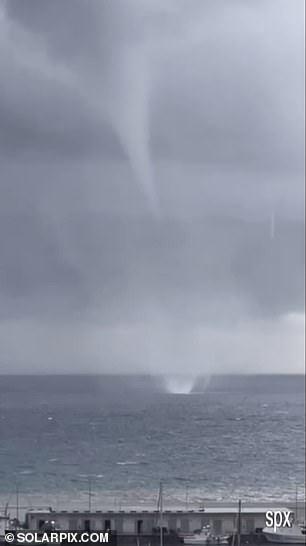
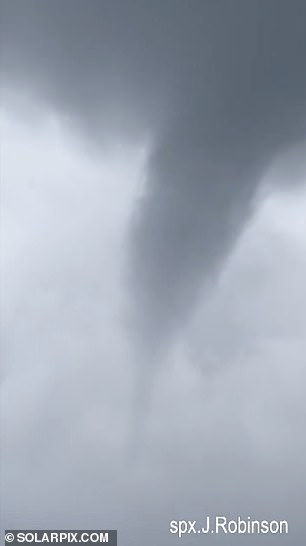




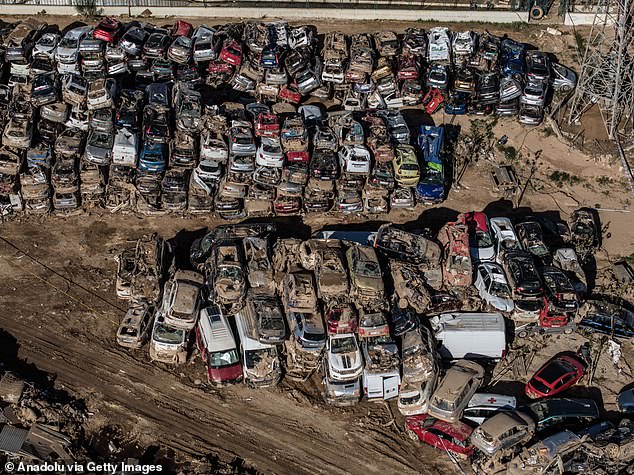
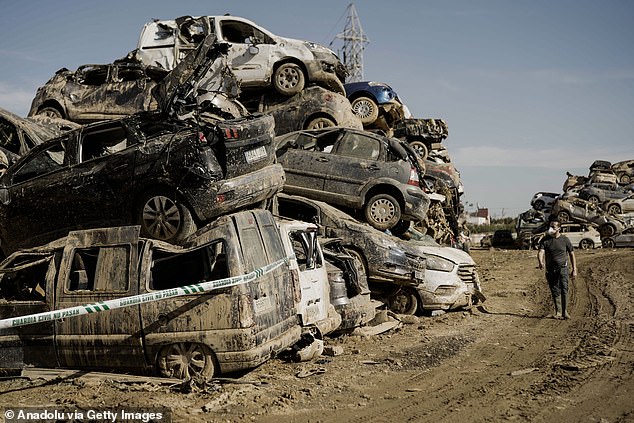
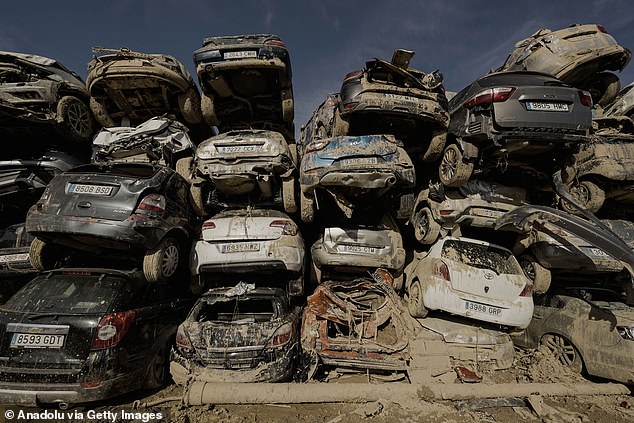
The downpours also delayed the start of the Billie Jean King Cup tennis finals between Spain and Poland, which was set for Wednesday.
Fortunately, the storms are not thought to have caused any deaths so far.
The storm system affecting Spain is caused by warm air that collides with stagnant cold air and forms powerful rain clouds.
The phenomenon is known locally as DANA, a Spanish acronym for high-altitude isolated depression, and unlike common storms or squalls it can form independently of polar or subtropical jet streams.
When cold air blows over warm Mediterranean waters it causes hotter air to rise quickly and form towering, dense, water-laden clouds that can remain over the same area for many hours, raising their destructive potential.
Eastern and Southern Spain are particularly susceptible to the phenomenon due to their position between the Atlantic Ocean and the Mediterranean Sea.
Warm, humid air masses and cold fronts meet in a region where mountains favour the formation of storm clouds and rainfall.
The country has also suffered through an almost two-year drought, meaning that when the deluge happened, the ground was so hard that it could not absorb the rain, worsening the effect of the flash floods.
This week, dramatic new photos emerged revealing the extent of damage to cars in Valencia that were swept away in the deadly flooding late last month.
Nearly 100 people are still missing following the floods, which began after devastatingly heavy rain fell on the eastern Spanish region on October 28.
In one town just outside the city of Valencia, Chiva, more rain fell in eight hours than it had for the preceding 20 months.
The floods took a severe toll on the infrastructure in the region, and swept up countless cars in their wake.
The snaps, taken at a junkyard outside the Valencian city of Paiporta, show rows and rows of still-mud-caked vehicles stacked on top of each other.
Many of them are missing parts, including engine blocks, windscreens and entire doors.
One aerial shot showed an ambulance, with its roof dented and covered in mud, buried underneath an Opel coupe.
The stacks were as high as six vehicles each, with the bottom cars often being the most severely damaged.
Despite the floods subsiding, the junkyard itself was still waterlogged, with many of the vehicles left to corrode in stagnant, shallow pools of water.
Spain’s Consortium for Insurance, a public-private entity that pays insurance claims for extreme risks like floods said that it had received 44,000 claims for motor vehicles damaged by the floods, with the number expected to rise as more and more people return to their homes.
Spaniards are up in arms over the regional and national government’s response to the floods.
As many as 130,000 people took to the streets of Valencia on Saturday to rage against the authorities.


